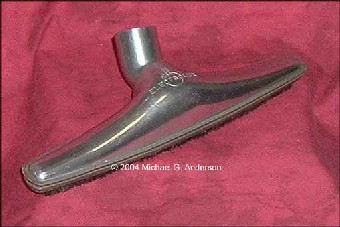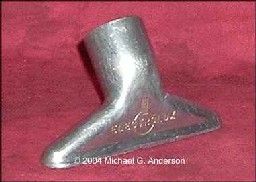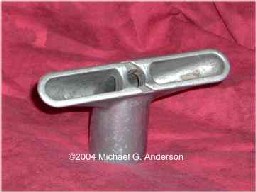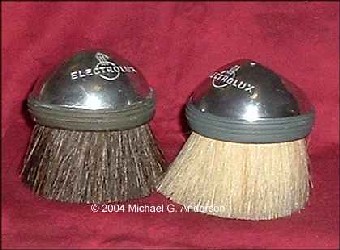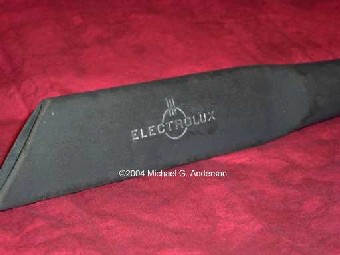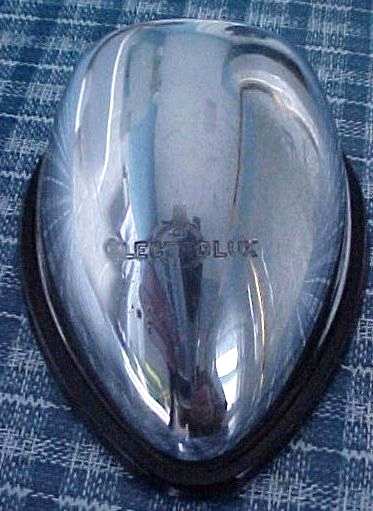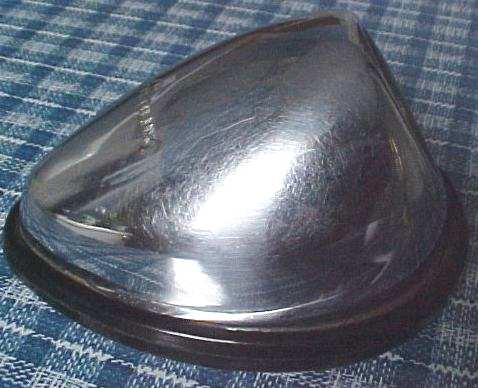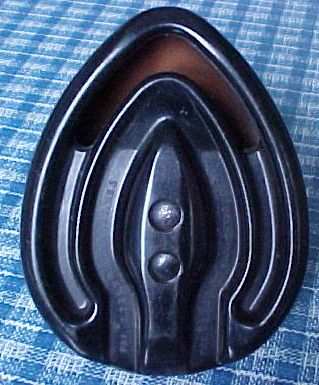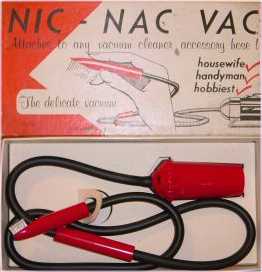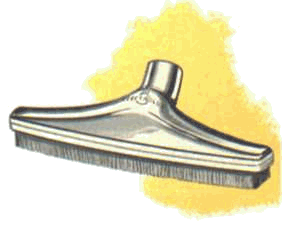 The floor nozzle is absolutely gorgeous with it's gentile curves and simple lines, and has a swivel collar that allows it to be easily maneuvered around furniture legs.
Unlike the rug nozzle, this accessory has but one purpose and lacks any special features. This design sticks around all the way into the mid 1950's, when it is finally replaced by the combination rug/floor tool that debuts with the Model E.
This floor nozzle does have a sister- a wall brush with softer, white bristles and a larger opening for a more gentile airflow. I guess they didn't want it to strip the wallpaper off.
The basic small nozzle is probably designed for plush furniture and drapery as it has no bumpers. An interesting design element is the tiny hole in the middle of the bottom, with two angled channels radiating out to the nozzle's edge.
I've been looking though the Electrolux patents for this nozzle, to find out exactly what the purpose of this feature is, but have yet to find it.
My feeling is that this allowed a tiny amount of airflow through the nozzle when pressed against a surface, making it easier to slide around while vacuuming. The channels might also help airflow through the nozzle and elbow by giving it a spin, like a tornado.
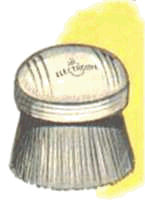 The white bristled brush was for delicate items, like lampshades, while the brown one was for regular dusting.
Both nozzles have a soft plastic cushion on the inside to protect your items from scuffs and scratches - a feature missing on today's dusters.
 What, exactly, can be said about the crevice tool? Well, for one its concentrated suction and narrow design has gotten us out of - or rather, into - a lot of tight places.
Touted as a tool for cleaning the old steam radiators, many of us found many more uses for this handy tool. If it can be found, that it is. I've heard that the crevice tool is number one when it comes to missing vacuum accessories. Anyone check the sofa cushions lately?
This example is probably from a 1940's model XXX, though I have no way to verify it's age. It came to me in rather poor shape, with lots of scratches and dings -but no cracks in it anywhere.
I've painted the Electrolux logo to make it stand out for the photos, and cleaned it up with some Nova Clean pipe fitters' solvent (If you want to try this technique, please email me before you do- you could end up with a gooey blob of plastic!) The end result is a much nicer product that will hopefully last another 50 years.
|

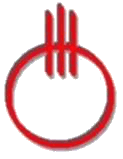
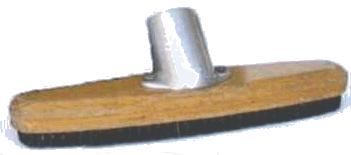 With these new 'little tin cans with a motor' came a selection of four nozzles. A large nozzle for carpets and rugs, a large brush for floors, a duster, and a small nozzle for furniture were among the first accessories offered.
With these new 'little tin cans with a motor' came a selection of four nozzles. A large nozzle for carpets and rugs, a large brush for floors, a duster, and a small nozzle for furniture were among the first accessories offered.
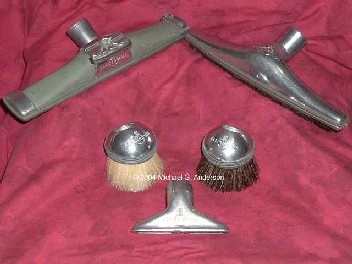
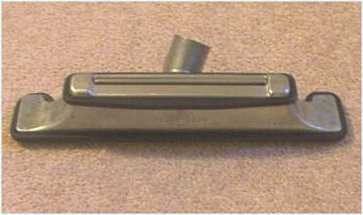
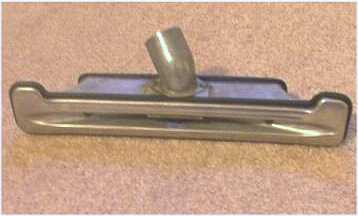
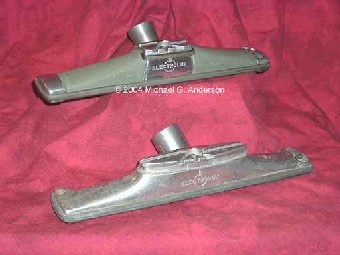
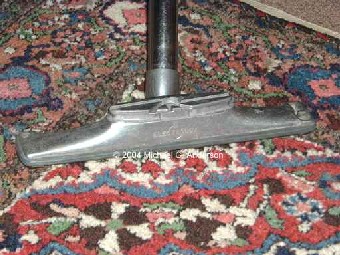
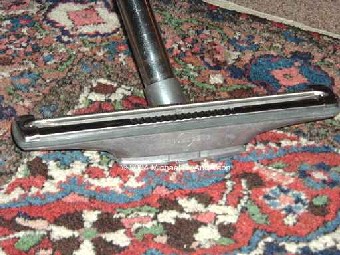
 The floor nozzle is absolutely gorgeous with it's gentile curves and simple lines, and has a swivel collar that allows it to be easily maneuvered around furniture legs.
The floor nozzle is absolutely gorgeous with it's gentile curves and simple lines, and has a swivel collar that allows it to be easily maneuvered around furniture legs.
 The white bristled brush was for delicate items, like lampshades, while the brown one was for regular dusting.
The white bristled brush was for delicate items, like lampshades, while the brown one was for regular dusting.
 What, exactly, can be said about the crevice tool? Well, for one its concentrated suction and narrow design has gotten us out of - or rather, into - a lot of tight places.
What, exactly, can be said about the crevice tool? Well, for one its concentrated suction and narrow design has gotten us out of - or rather, into - a lot of tight places.
